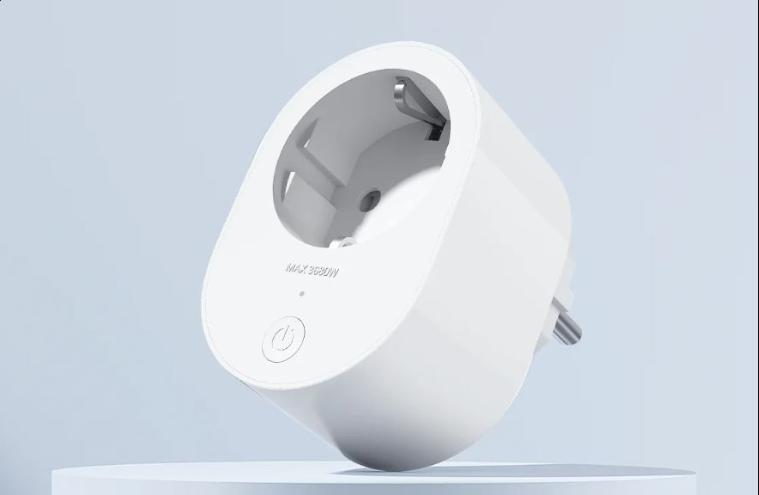Transforming your home into a smart, automated haven doesn’t require a big investment or technical expertise. Smart plugs are one of the easiest and most affordable ways to start your DIY journey. In this guide, we’ll walk you through installing and setting up smart plugs, highlight their benefits, and provide tips to get the most out of these versatile devices.
What Are Smart Plugs?
Smart plugs are compact devices that connect to your existing outlets and allow you to control connected devices remotely. They’re perfect for automating everyday appliances like lamps, coffee makers, and fans. With app or voice control, you can schedule operations, monitor energy usage, and even integrate them with other smart devices.
Step-by-Step Guide to a Smart Plug installation
Step 1: Choose the Right Smart Plug
Before purchasing, ensure the smart plug is compatible with your ecosystem, whether it’s Amazon Alexa, Google Assistant, or Apple HomeKit. Some models also support Matter for broader integration.
Recommended Smart Plugs:
- TP-Link Kasa Smart Plug: Affordable and feature-rich.
- Amazon Smart Plug: Seamless integration with Alexa.
- Meross Smart Plug: Great for HomeKit users.
- Xiaomi Smart Plug 2 (Wi-Fi) (main image)
Step 2: Unbox and Inspect the Smart Plug
Unpack the smart plug and check for any damage. Read the included manual for specific setup instructions.
Step 3: Connect the Plug to a Power Outlet
Insert the smart plug into a wall outlet. Ensure it’s in a location with a strong Wi-Fi signal.
Step 4: Download the Companion App
Most smart plugs require a companion app for setup. Popular apps include:
- Kasa Smart for TP-Link plugs.
- Amazon Alexa for Amazon plugs.
- Meross app for Meross devices.
Follow the app’s instructions to create an account or log in.
Step 5: Pair the Smart Plug with Your Wi-Fi
During the setup process, connect the smart plug to your Wi-Fi network. Ensure you use a 2.4 GHz network, as many smart plugs don’t support 5 GHz.
Step 6: Test the Smart Plug
Once connected, test the plug by turning a connected device on and off using the app.
Top Uses for Smart Plugs
- Automating Lights: Control lamps or decorative lights to match your schedule or create ambiance.
- Energy Management: Monitor the energy consumption of devices to save on electricity bills.
- Seasonal Decor: Automate holiday lights for convenience and energy savings.
- Appliance Scheduling: Set your coffee maker or space heater to turn on before you wake up.
- Away Mode: Simulate presence by turning lights or devices on and off while you’re out.
Pro Tips for Smart Plug Efficiency
- Group Plugs: Use the app to create groups and control multiple plugs simultaneously.
- Integrate with Routines: Link smart plugs with voice assistants for hands-free control.
- Use Schedules: Maximize energy savings by scheduling devices to turn off during idle times.
- Check Compatibility: Ensure your plug supports the wattage and type of device you’re automating.
Troubleshooting Common Issues
- Wi-Fi Connection Problems: Ensure the plug is within range of your router and uses a 2.4 GHz network.
- Device Not Responding: Restart the smart plug and check for firmware updates.
- Integration Issues: Verify permissions and re-link the plug to your voice assistant or smart home hub.
Final thoughts
Smart plugs are an easy and cost-effective way to dip your toes into home automation. With simple installation and versatile functionality, they’re perfect for anyone looking to make their daily routines more convenient. Start with one or two plugs, experiment with automation, and watch as your home becomes smarter with every device you connect. Happy automating!
- Designing a Smarter Home in 2026: What People Get Wrong About Automation
 Smart homes were once science fiction, but today they’re a reality in millions of households. With voice assistants, smart plugs, and automated lighting systems, it’s easy to assume home automation is simply a matter of plugging in a few devices. Yet, many homeowners quickly discover that “smart” doesn’t always mean simple. In this article, we’ll…
Smart homes were once science fiction, but today they’re a reality in millions of households. With voice assistants, smart plugs, and automated lighting systems, it’s easy to assume home automation is simply a matter of plugging in a few devices. Yet, many homeowners quickly discover that “smart” doesn’t always mean simple. In this article, we’ll… - Automated Online Trading: How IoT is Redefining Financial Markets
 Introduction automated online trading In a world where milliseconds can decide millions, the fusion of Internet of Things (IoT) technology and automated online trading is reshaping global finance. What once relied solely on human judgment now increasingly depends on connected machines, real-time data, and predictive algorithms. From weather sensors influencing agricultural trades to smart logistics…
Introduction automated online trading In a world where milliseconds can decide millions, the fusion of Internet of Things (IoT) technology and automated online trading is reshaping global finance. What once relied solely on human judgment now increasingly depends on connected machines, real-time data, and predictive algorithms. From weather sensors influencing agricultural trades to smart logistics… - The Role of Linux in IoT: Powering the Connected World
 The Internet of Things (IoT) is everywhere—from smart homes and wearable devices to industrial automation and self-driving cars. Behind the scenes, one operating system plays a surprisingly dominant role: Linux. Known for its stability, flexibility, and open-source nature, Linux has become the backbone of countless IoT devices and platforms. But what makes Linux so well-suited…
The Internet of Things (IoT) is everywhere—from smart homes and wearable devices to industrial automation and self-driving cars. Behind the scenes, one operating system plays a surprisingly dominant role: Linux. Known for its stability, flexibility, and open-source nature, Linux has become the backbone of countless IoT devices and platforms. But what makes Linux so well-suited… - The Smart Home Revolution in 2025: How IoT is Transforming Everyday Living
 In the past decade, the vision of a truly smart home has moved from futuristic fantasy to everyday reality. As we step into 2025, the Internet of Things (IoT) has matured into a robust ecosystem, connecting appliances, security systems, lighting, and even entertainment devices under one seamless digital roof. The result? Homes that are safer,…
In the past decade, the vision of a truly smart home has moved from futuristic fantasy to everyday reality. As we step into 2025, the Internet of Things (IoT) has matured into a robust ecosystem, connecting appliances, security systems, lighting, and even entertainment devices under one seamless digital roof. The result? Homes that are safer,… - IoT and Data Privacy: How Safe Is Your Smart Home in 2025? – IoT Security
 The smart home revolution has made everyday life more convenient than ever. From voice assistants that control the lights to security cameras that send alerts directly to your phone, connected devices have become part of our daily routines. But with this convenience comes an important question: how safe is your personal data in a world…
The smart home revolution has made everyday life more convenient than ever. From voice assistants that control the lights to security cameras that send alerts directly to your phone, connected devices have become part of our daily routines. But with this convenience comes an important question: how safe is your personal data in a world…







